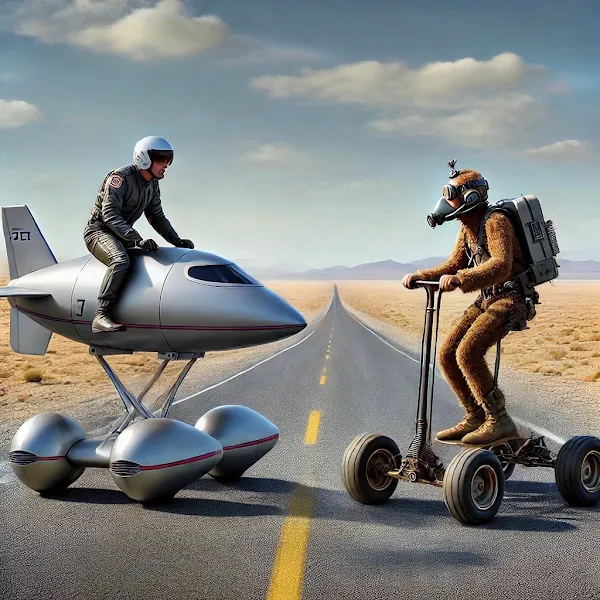This is an exaggerated math words problem. It looks like this:
Hangar A and B are separated 190 miles apart. Ted, from Hangar A, drove a jet landsubmarinewithwheels to Hangar B and met Gunther, which rode a breathingscooterwithfeet, from Hangar B to Hangar A, at certain point between the two hangars. They both didn't start to travel at the same time. Gunther was earlier than Ted.
When they met, Gunther had traveled for twice the length of time as Ted and at two-fifteenth rate of Ted's speed.
How many miles had Ted driven the jet landsubmarinewithwheels when they met?
So, there are two options.
The first one is to not do the problem and stare at blank 🥳Second is the typing below.
Linear motion
There was no acceleration being mentioned in the problem, so they must travel in (uniform) linear motion — with constant velocity.
Also, because the paths of both were not mentioned, we shall assume they went in a straight line.
In linear motion, the relationship between distance, rate, and time is:
Gunther
When they met, Gunther had traveled for twice the length of time as Ted and at two-fifteenth rate of Ted's speed.
Then the distance Gunther had traveled:
Gunther had traveled 4/15 of Ted's distance — when they met.
Total Distance
Therefore, when they met:
Create Variable
Let's denote the Ted's mileage as Tm.
From the above step:
Thus ➡️ (4/15)Tm + Tm = 190
(19/15)Tm = 190
Tm = 190 × (15/19) = 150
The Answer
150 miles
Ted had traveled 150 miles when he met Gunther on the way to Hangar B.
The Late Departure of Ted?
It's already included in the calculation.
This fragment: ...Gunther had traveled for twice the length of time as Ted....
Implicitly, Ted's time is already plus his late departure.
Can We Calculate the Velocity of Each?
No, because the exact time for either one was not mentioned in the problem. Only the ratios were mentioned.

Comments
Post a Comment